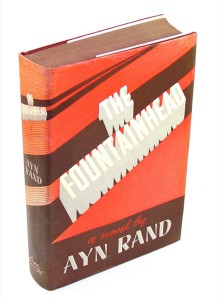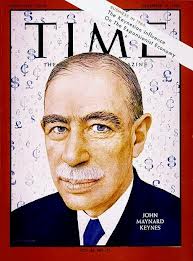Among the powers wielded by a bookshop owner is the authority to unite on the shelf what could never be united in life.
 At Circle City Books this week two of the most valuable books that have come my way were paired in a forced marriage that might still set the heavens aflame. Last fall I found a copy of “The Fountainhead,” the 1947 edition (issued for the release of the Gary Cooper movie version) of Ayn Rand’s early polemic against collectivism, and because it is a strikingly handsome copy, I’ve had it on display ever since. This book, as you might know, is one of the more controversial novels in the English language, at least insofar as it provokes people just by being seen. Its adherents, those who hew to the libertarian right, cite it as among their most profound influences; its detractors, those who angle leftward, see it as the beginning of a modern philosophy of selfishness and male sexual dominance. Not many other books, other than Rand’s later and even more polarizing, “Atlas Shrugged,” generates so much agita in a bookstore. For a while, perversely but ineffectively, I paired it on a shelf with a Noam Chomsky book which, though it is much less well-known, elicits a similar reaction, only in reverse. But this week I finally came across some heavy artillery to even the ideological scales: a British first edition of John Maynard Keynes “The Economic Consequences of the Peace.” Now that’s a
At Circle City Books this week two of the most valuable books that have come my way were paired in a forced marriage that might still set the heavens aflame. Last fall I found a copy of “The Fountainhead,” the 1947 edition (issued for the release of the Gary Cooper movie version) of Ayn Rand’s early polemic against collectivism, and because it is a strikingly handsome copy, I’ve had it on display ever since. This book, as you might know, is one of the more controversial novels in the English language, at least insofar as it provokes people just by being seen. Its adherents, those who hew to the libertarian right, cite it as among their most profound influences; its detractors, those who angle leftward, see it as the beginning of a modern philosophy of selfishness and male sexual dominance. Not many other books, other than Rand’s later and even more polarizing, “Atlas Shrugged,” generates so much agita in a bookstore. For a while, perversely but ineffectively, I paired it on a shelf with a Noam Chomsky book which, though it is much less well-known, elicits a similar reaction, only in reverse. But this week I finally came across some heavy artillery to even the ideological scales: a British first edition of John Maynard Keynes “The Economic Consequences of the Peace.” Now that’s a heavyweight battle – Keynes and Rand – and it helps that they are likely the two most valuable books in the store. I’ll let the marketplace decide their fates. But for the purpose of sales, anything that grabs a browser’s attention is advantageous, even if it just starts an argument.
heavyweight battle – Keynes and Rand – and it helps that they are likely the two most valuable books in the store. I’ll let the marketplace decide their fates. But for the purpose of sales, anything that grabs a browser’s attention is advantageous, even if it just starts an argument.
The placing of books in a store is a puzzle. For instance, I have a library cart that I can wheel outside on nice days – really most days – that allows me to give passersby a chance to look at some 200 books without having to come inside the store. I have been advised by some to put sale books out there – books that for one reason or another are cheap. This is something that a lot of browsers expect. I know that because some of them come inside and ask if the books are outside because they are on sale. But they are not on sale; they are an assortment of what I think are highly meritorious books. It never seemed to me that it was smart to give customers a first impression of the store by highlighting crappy books. My cart has classics and recent bestsellers, usually books that I have multiple copies of because they are books in high demand. But maybe I am wrong, and I should be trying to unload the dross on hapless pedestrians. It’s a puzzle.
[Also: Have You Planogrammed Lately?]
My wife and I have a running disagreement over the placement of the young adult books and the children’s books. She thinks they should be together, or at least in the general vicinity, which is a reasonable idea. But I chose to separate them in different rooms on the theory that young adults might find it liberating to be uncoupled from the Magic Tree House and Amelia Bedelia. I don’t know who’s right, but it’s an ongoing experiment. And, I’ve broken up the nature section into three separate categories: animals and pets, plants and gardening, and hard sciences (physics, chemistry and biology). The hard sciences are in my academic non-fiction room; the others are in a non-academic room. This arrangement occasionally befuddles customers, but I’ll give it some more time. Now, I deliberately put my magic/supernatural shelf next to the business books on the basis that they belong together since each field is calculated to leverage the willing gullibility of the average consumer into a tidy profit. So far, no one seems to find anything wrong with that, and I suspect both Keynes and Rand would concur.
